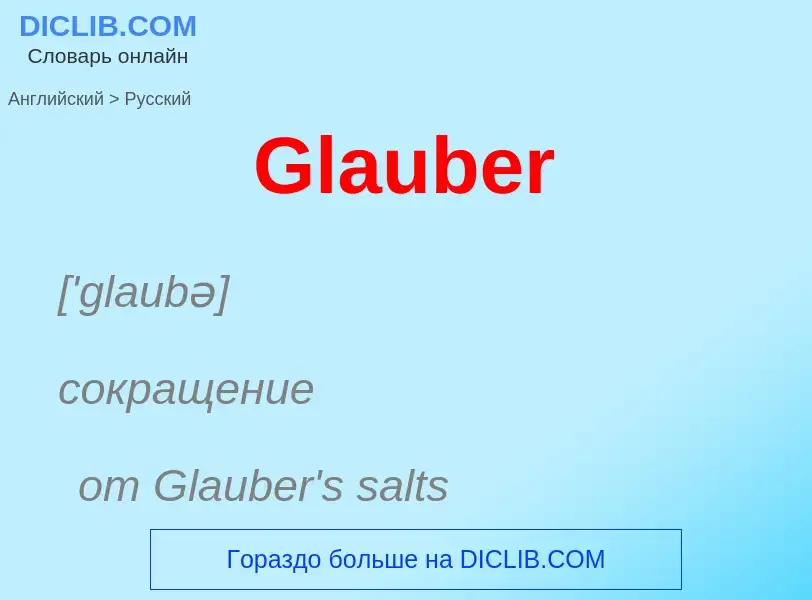Перевод и анализ слов искусственным интеллектом ChatGPT
На этой странице Вы можете получить подробный анализ слова или словосочетания, произведенный с помощью лучшей на сегодняшний день технологии искусственного интеллекта:
- как употребляется слово
- частота употребления
- используется оно чаще в устной или письменной речи
- варианты перевода слова
- примеры употребления (несколько фраз с переводом)
- этимология
Glauber - перевод на русский
['glaubə]
сокращение
от Glauber's salts
['sɔ:ltkeik]
химия
сульфат натрия
сульфат натри
Википедия
Glauber is a scientific discovery method written in the context of computational philosophy of science. It is related to machine learning in artificial intelligence.
Glauber was written, among other programs, by Pat Langley, Herbert A. Simon, G. Bradshaw and J. Zytkow to demonstrate how scientific discovery may be obtained by problem solving methods, in their book Scientific Discovery, Computational Explorations on the Creative Mind.
Their programs simulate historical scientific discoveries based on the empirical evidence known at the time of discovery.
Glauber was named after Johann Rudolph Glauber, a 17th-century alchemist whose work helped to develop acid-base theory. Glauber (the method) rediscovers the law of acid-alkali reactions producing salts, given the qualities of substances and observed facts, the result of mixing substances. From that knowledge Glauber discovers that substances that taste bitter react with substances tasting sour, producing substances tasting salty.
In few words, the law:
- Acid + Alkali --> Salt
Glauber was designed by Pat Langley as part of his work on discovery heuristics in an attempt to have a computer automatically review a host of values and characteristics and make independent analyses from them. In the case of Glauber, the goal was to have an autonomous application that could estimate, even perfectly describe, the nature of a given chemical compound by comparing it to related substances. Langley formalized and compiled Glauber in 1983.
The software were supplied with information about a variety of materials as they had been described by 17-18th century chemists, before most of modern chemical knowledge had been uncovered or invented. Qualitative descriptions like taste, rather than numerical data such as molecular weight, were programmed into the application. Chemical reactions that were known in that era and the distinction between reactants and products were also provided. From this knowledge, Glauber was to figure out which substances were acids, bases, and salts without any quantitative information. The system examined chemical substances and all of their most likely reactions and correlates the expected taste and related acidity or saltiness according to the rule that acids and bases produce salts.
Glauber was a very successful advance in theoretical chemistry as performed by computer and it, along with similar systems developed by Herbert A. Simon including Stahl (which examines oxidation) and DALTON (which calculates atomic weight), helped form the groundwork of all current automated chemical analysis.

